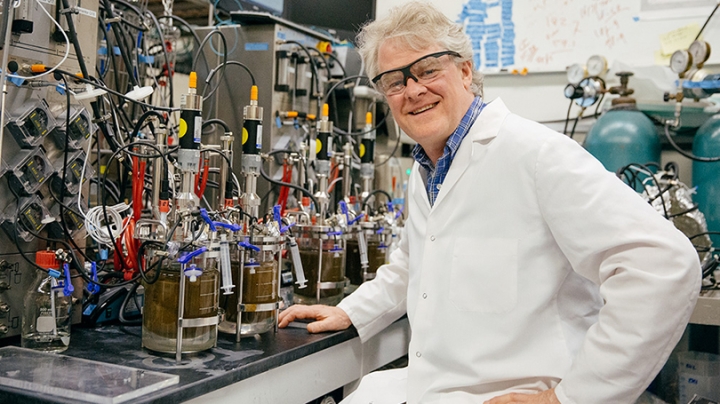Read the full story, written by Professor Lee Lynd, Thayer ’84, ’87, and published by Thayer School of Engineering.
A robust second-generation biofuels industry based on inedible cellulosic biomass available as wood, grass, and various wastes was widely expected to be in place by now. Anticipated benefits include climate change mitigation and rural economic development while avoiding the limitations of first-generation biofuels. Progress has been made but at a much slower pace than expected. It is important to understand why. The experience of the past decade and the need for low-cost technology in a world of low oil prices necessitates a strategic reset for biofuels as part of a “grand challenge” renewables strategy.
Two years ago, at the Conference of the Parties to the United Nations Framework Convention on Climate Change (COP21), over 190 nations, including the United States, committed themselves to keeping the increase in global average temperature 2°C below pre-industrial levels, with an aim of limiting the increase to 1.5°C. Plant biomass provides 10 percent of global primary energy today and is widely expected to provide on the order of a quarter of primary energy in prominent low-carbon scenarios for 2050. Biomass provides as much energy as oil, natural gas, and coal combined in Shell’s net-zero energy scenario, as well as opportunities for carbon removal that must be deployed at a large scale to have more than a 50-percent chance of achieving the 2°C goal.
Among various types of plant biomass, cellulosic feedstocks are thought to have the greatest potential for mitigating climate change and are widely available at a lower cost per unit energy than petroleum. Transport is both one of the largest and fastest-growing energy sectors and one of the most difficult to decarbonize. Even if the rest of the global economy were completely decarbonized, a failure to displace the fossil fuels used in aviation, ocean freight, and long-haul trucking with low-carbon alternatives would result in emissions exceeding the 2°C COP21 target. Biofuels are the leading low-carbon option for these transport modes, which represent about half of global transport energy.

